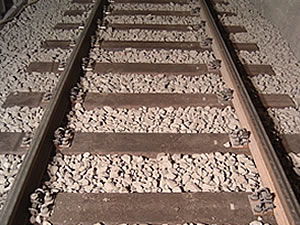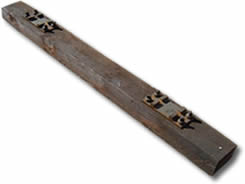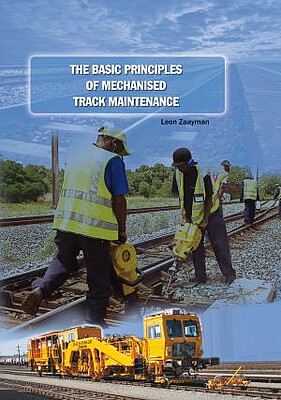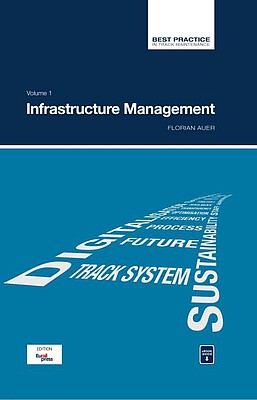Wooden sleepers / ties
Wooden sleepers are nowadays made of beech or oak wood. As a result of the high mechanical stresses and their low strength, soft wood sleepers can no longer be used. A wooden sleeper should have a lifespan of 30 - 45 years after impregnation. The wooden sleepers out in the track are continually exposed to constantly changing moisture and dryness, which is why they should be impregnated in a water and insect repellent material to provide protection and prolong their service life.
In addition, sleepers should not have any distortion, rot, transverse curvature or fungal infection.
On sleepers which have cracks, steel band clamps should be hammered into the end grained wood or they can be wound around with bandages. Today sleeper endplates which hold the Wood together are already fitted in advance.
Damage to wooden sleepers can occur over time. This can take the form of longitudinal cracks, rotation of the fasteners and pressure loading on the ribbed plates.
Advantages:
- Low weight of Wood.
- Good elastic behaviour when subjected to load.
- Good insulation capacity against the signal current.
- Reconditioning in the track is possible at any time.
- Quick replacement is possible even in short breaks in Operation.
Disadvantages:
- Susceptible to stress and moisture.
- Highly susceptible to rot due to weather.
- Short life for outdoor use.
You can find suitable specialist literature to the topic here:
The Basic Principles of Mechanised Track Maintenance
This book is dedicated to the many people involved in the day to day planning and performance of track maintenance activities. Providing a practical approach to everyday challenges in mechanised track maintenance, it is not just intended as a theoretical approach to the track system.
Railways aim at transporting people and freight safely, rapidly, regularly, comfortably and on time from one place to another. This book is directed to track infrastructure departments contributing to the above objective by ensuring the track infrastructure’s reliability, availability, maintainability and safety – denoted by the acronym RAMS. Regular, effective and affordable track maintenance enable RAMS to be achieved.
Best Practice in Track Maintenance, Vol 1 - Infrastructure Management
Infrastructure Management Volume 1 looks at aspects of infrastructure management with particular reference to the single European railway area. Based on best-practice examples from Central Europe, measures for the targeted retrofitting and improvement of the infrastructure maintenance of the existing network are presented. In many cases, infrastructure operators are faced with a generational change, which accelerates the process. Modern information and communication technology can simplify the comprehension and presentation of complex contexts. Modified approaches to asset management and life-cycle management enable implementation of the "transparent permanent way" or the "railway 4.0".




